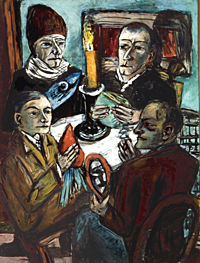The Mildred Lane Kemper Art Museum dates back to 1881, making it the oldest art museum west of the Mississippi River. Originally located downtown, as part of Washington University’s St. Louis School and Museum of Fine Arts, the museum was rededicated in 1906 as the St. Louis Museum of Fine Arts and moved into the former Palace of Fine Arts (originally built for the 1904 World’s Fair). The following year, director Halsey C. Ives led a successful campaign to pass a tax proposition supporting the new museum, thus establishing the first municipally funded art museum in the United States. However, the city refused to release the tax levy to Washington University, which, as a private institution, could not, according to the state constitution, administer public monies.

In 1909, the St. Louis Museum of Fine Arts dissolved as a department of Washington University and became the City Art Museum (now the Saint Louis Art Museum), though the University collections remained on loan to the city for the next 50 years. The collection returned to campus in 1960 with the dedication of Steinberg Hall, the first building designed by future Pritzker Prize-winning Japanese architect Fumihiko Maki. In Fall 2006 the museum will dedicate new facilities — also designed by Maki and located immediately adjacent to Steinberg Hall — that roughly triple exhibition capacity.
Throughout its history, the Kemper Art Museum has focused on collecting the work of contemporary artists. Early acquisitions included iconic images of the American West by George Caleb Bingham, Carl Wimar and others. Much of the modern collection was built by curator H.W. Janson, author of the influential textbook History of Art (1962). In 1945, Janson de-accessioned 120 paintings and more than 500 other objects — then almost one-sixth of total holdings — and used the resulting funds, about $40,000, to acquire major works by Max Beckmann, Georges Braque, Juan Miró, Pablo Picasso, Max Ernst, Juan Gris and Yves Tanguy, among others.
Subsequent curators continued to build on Janson’s thematic architecture, adding important examples by Henri Matisse, Jackson Pollock, Willem de Kooning and Robert Rauschenberg, among many others. In recent years the museum has acquired a strong collection of photo-based and multimedia artworks, including major pieces by Eleanor Antin, Franz Ackermann, Christian Boltanski, Andrea Fraser, Isa Genzken, Candida Höfer, Christian Jankowski, Louis Lawler, Michael Majerus and Katharina Sieverding.